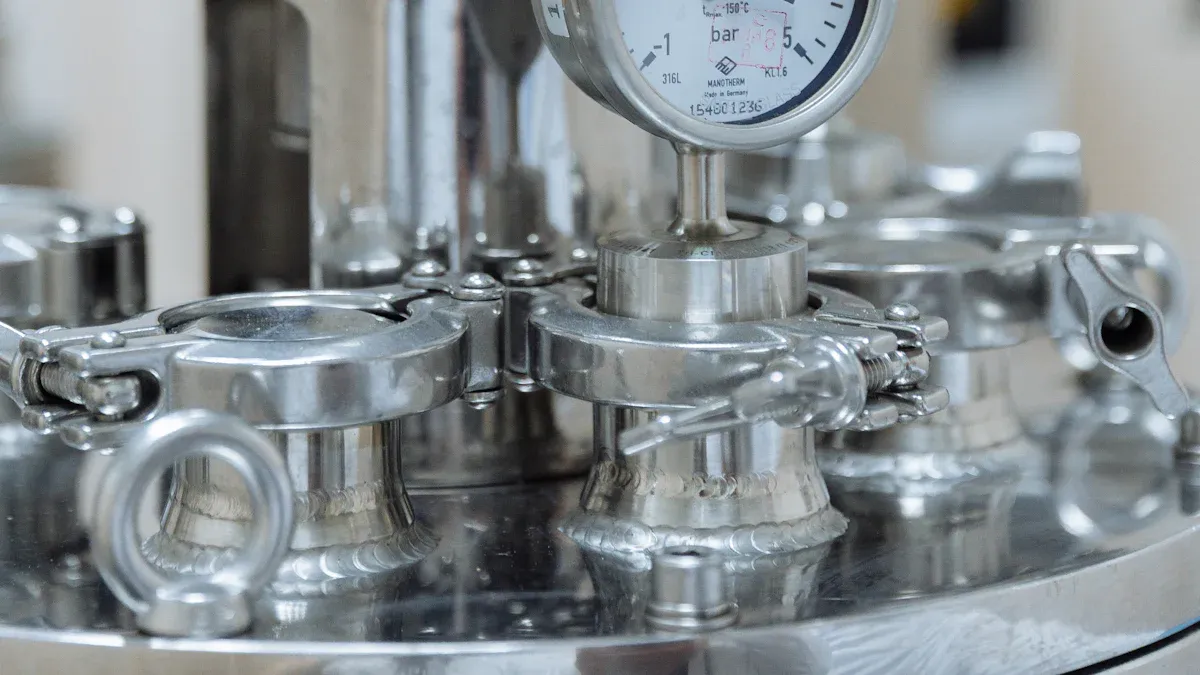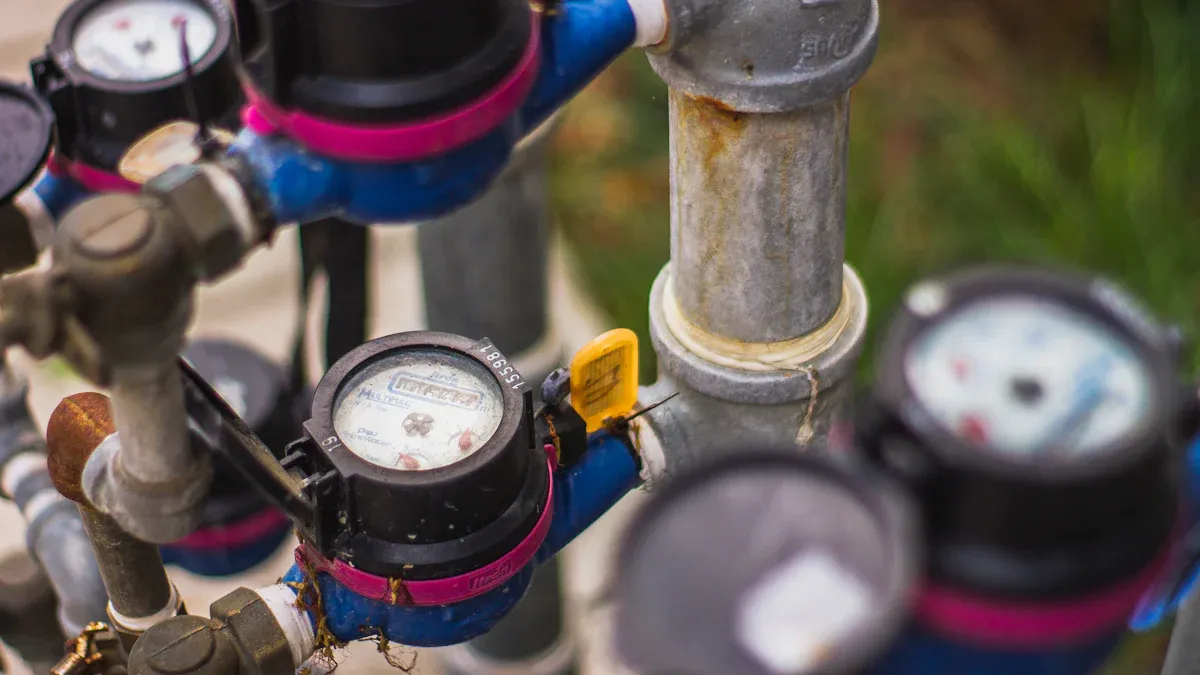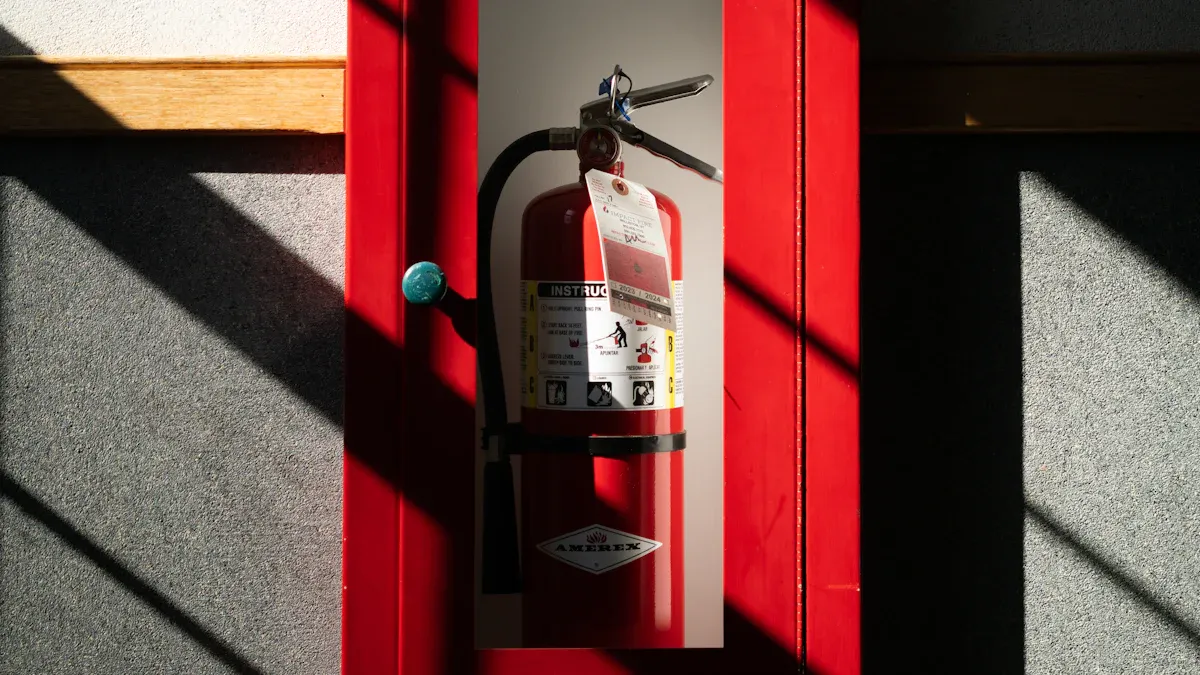
Pressure regulating valves, commonly referred to as PRV valves, are indispensable components in fire suppression systems, particularly in buildings with ACM cladding. These valves are designed to maintain consistent water pressure, which is crucial for ensuring operational efficiency and meeting fire safety compliance standards. According to a study conducted by the Los Angeles City Fire Department, more than 75% of the 413 tested pressure regulating valves required recalibration or repair, underscoring their critical importance in maintaining system reliability. Furthermore, the National Fire Protection Association (NFPA) enforces stringent testing protocols for these valves to prevent overpressure and guarantee safety during emergencies. Reliable solutions, such as pressure restricting valves and hydrant valve international outlet fittings, are essential for protecting lives and property in fire-related incidents.
Key Takeaways
- Pressure regulating valves (PRVs) keep water pressure steady in fire systems. This helps them work well during emergencies.
- Checking and fixing PRVs often is very important. It finds problems early, stops failures, and keeps people safe.
- Buildings with ACM cladding need PRVs to meet fire rules. They save lives and protect buildings from fire dangers.
The Role of Pressure Regulating Valves in Fire Suppression

What Is a Pressure Regulating Valve?
A pressure regulating valve is a specialized device designed to control and maintain consistent water pressure within a system. It ensures that the pressure remains within safe and operational limits, regardless of fluctuations in the water supply. These valves are critical in fire suppression systems, where stable water pressure is essential for effective performance during emergencies.
Pressure regulating valves come in various models, each tailored to specific applications. For instance, the 90-01 model features a full port design that maintains steady downstream pressure, making it ideal for high-flow systems. On the other hand, the 690-01 model, with its reduced port design, offers similar functionality but is better suited for systems requiring lower flow rates. The table below highlights these technical specifications:
| Model | Description |
|---|---|
| 90-01 | Full port version of the pressure reducing valve, designed to maintain a steady downstream pressure. |
| 690-01 | Reduced port version of the pressure reducing valve, also maintains downstream pressure effectively. |
These valves are indispensable in ensuring that fire suppression systems operate efficiently under varying conditions.
How Pressure Regulating Valves Work in Fire Suppression Systems
Pressure regulating valves play a pivotal role in fire suppression systems by controlling water flow and pressure. When a fire suppression system activates, the valve adjusts the water pressure to match the system’s requirements. This adjustment prevents over-pressurization, which could damage the system or reduce its effectiveness.
The valve operates through a combination of internal mechanisms, including a diaphragm and a spring. When water enters the valve, the diaphragm senses the pressure level. If the pressure exceeds the set limit, the spring compresses, reducing the flow rate and bringing the pressure back to the desired level. This process ensures that the system delivers water at the optimal pressure for extinguishing fires.
By maintaining consistent water pressure, pressure regulating valves enhance the reliability and efficiency of fire suppression systems. They ensure that water reaches all areas of a building, even those at higher elevations or farther from the water source. This capability is particularly crucial in buildings with ACM cladding, where rapid and effective fire suppression can prevent catastrophic damage.
Fire Hazards in ACM Cladding Systems and the Importance of PRVs

Understanding Fire Risks in ACM Cladding
Aluminum Composite Material (ACM) cladding systems pose significant fire risks due to their composition. Panels with polyethylene (PE) cores, especially those with low-density PE (LDPE), are highly combustible. Research by McKenna et al. revealed that LDPE cores exhibit peak heat release rates (pHRR) up to 55 times higher than the safest ACM panels, reaching 1364 kW/m². This alarming figure highlights the rapid spread of fire in buildings with such cladding. Additionally, the study recorded a total heat release (THR) of 107 MJ/m² for LDPE cores, further emphasizing their potential to fuel large-scale fires.
Intermediate-scale tests conducted by Guillame et al. demonstrated that ACM panels with PE cores release heat at significantly higher rates compared to other materials. This difference stems from the higher polymer content in PE cores, which accelerates combustion. Similarly, Srivastava, Nakrani, and Ghoroi reported a pHRR of 351 kW/m² for ACM PE samples, underscoring their combustibility. These findings collectively illustrate the heightened fire risks associated with ACM cladding systems, particularly those containing PE cores.
Buildings with ACM cladding face unique challenges during fire emergencies. The rapid heat release and spread of flames can compromise evacuation routes and hinder firefighting efforts. Effective fire suppression systems, equipped with reliable components like pressure regulating valves, are essential to mitigate these risks and protect lives.
How Pressure Regulating Valves Mitigate Fire Hazards in ACM Cladding Systems
Pressure regulating valves play a critical role in reducing fire hazards in buildings with ACM cladding. These valves ensure consistent water pressure throughout the fire suppression system, enabling efficient delivery of water to affected areas. In buildings with ACM cladding, where fires can escalate quickly, maintaining optimal water pressure is vital for controlling flames and preventing further damage.
When a fire suppression system activates, the pressure regulating valve adjusts the water flow to meet the system’s requirements. This adjustment prevents over-pressurization, which could damage the system or reduce its effectiveness. By delivering water at the correct pressure, the valve ensures that sprinklers and hoses operate efficiently, even in high-rise buildings or areas far from the water source.
Pressure regulating valves also enhance the reliability of fire suppression systems in ACM-clad buildings. Their ability to maintain stable pressure ensures that water reaches all areas, including those at higher elevations. This capability is crucial for combating fires fueled by the combustible cores of ACM panels. By mitigating the risks associated with rapid heat release and flame spread, these valves contribute to safer building environments.
Moreover, pressure regulating valves help buildings comply with fire safety standards. Regulatory bodies often mandate the use of these valves in fire suppression systems to ensure consistent performance during emergencies. Their implementation not only safeguards lives but also protects property from extensive fire damage.
Tip: Installing pressure regulating valves in fire suppression systems is a proactive measure that significantly reduces fire hazards in buildings with ACM cladding. Regular maintenance and inspections further enhance their effectiveness, ensuring optimal performance when it matters most.
Benefits of Pressure Regulating Valves in ACM Cladding Systems
Maintaining Consistent Water Pressure During Emergencies
Pressure regulating valves ensure consistent water pressure during fire emergencies, a critical factor in effective fire suppression. These valves adjust water flow to match the system’s requirements, preventing fluctuations that could compromise performance. In buildings with ACM cladding, where fires can spread rapidly, maintaining stable pressure ensures water reaches all areas, including higher elevations or distant zones.
By delivering water at optimal pressure, these valves enhance the efficiency of sprinklers and hoses, enabling firefighters to control flames more effectively. Their role becomes even more vital in high-rise structures, where gravity-induced pressure variations can hinder firefighting efforts. Reliable pressure regulation ensures that fire suppression systems operate seamlessly, safeguarding lives and property during emergencies.
Preventing Over-Pressurization and Enhancing System Reliability
Pressure regulating valves prevent over-pressurization, which can damage fire suppression systems and reduce their reliability. Historical studies and field data highlight their effectiveness:
- Field studies show a maximum failure rate of just 0.4% per year over a 30-month inspection interval, with a 95% confidence level.
- Regression analysis reveals that these valves become more reliable over time, emphasizing their durability and preventive capabilities.
By maintaining consistent pressure, these valves reduce wear and tear on system components, extending their lifespan and ensuring dependable performance. Their ability to prevent overpressure also minimizes the risk of system failure during critical moments, enhancing overall reliability.
Ensuring Compliance with Fire Safety Standards
Pressure regulating valves play a pivotal role in helping buildings meet stringent fire safety standards. Regulatory bodies like the National Fire Protection Association (NFPA) mandate their use in fire suppression systems to ensure consistent pressure and flow.
| Evidence | Description |
|---|---|
| NFPA 20 Compliance | Pressure regulating valves are essential for maintaining necessary pressure and flow in fire protection systems, as outlined in NFPA 20 standards. |
| Safety Device Requirement | NFPA 20 mandates the installation of Pressure Relief Valves to prevent overpressure in fire protection systems. |
Additionally, testing and certification services for these valves follow NFPA installation standards, ensuring compliance with fire safety regulations. The 1991 fire incident at One Meridian Plaza underscored the importance of properly set pressure reducing valves in maintaining adequate pressure for firefighting efforts. By adhering to these standards, pressure regulating valves not only enhance safety but also protect buildings from legal and financial repercussions associated with non-compliance.
Maintenance and Compliance for Pressure Regulating Valves
Importance of Regular Inspections and Maintenance
Regular inspections and maintenance of pressure regulating valves are essential for ensuring their reliability and functionality. Neglecting these critical components can lead to severe consequences, including equipment failure and safety hazards. For instance:
- A malfunctioning valve during an inspection caused a hazardous chemical leak, exposing workers to toxic substances and resulting in serious health issues.
- Users of specialized equipment must prioritize troubleshooting, repair, and inspection of safety valves to prevent accidents.
Routine maintenance helps identify wear, corrosion, or potential leaks before they escalate into significant problems. Best practices for maintaining these valves include:
| Best Practice | Description |
|---|---|
| Regular Inspection | Identify wear, corrosion, or leakage through periodic checks. |
| Calibration | Maintain the correct setpoint by calibrating the valve periodically. |
| Cleaning and Lubrication | Clean and lubricate moving parts as per manufacturer recommendations. |
| Replacement of Worn Parts | Replace damaged components promptly to ensure optimal performance. |
By adhering to these practices, building managers can extend the lifespan of pressure regulating valves and enhance the overall safety of fire suppression systems.
Adhering to Fire Safety Regulations for ACM Cladding Systems
Compliance with fire safety regulations is crucial for buildings with ACM cladding systems. Regulatory bodies mandate the use of pressure regulating valves to ensure consistent water pressure during emergencies. Following established guidelines minimizes risks and ensures the system operates effectively when needed most.
Technical bulletins outline several best practices for compliance:
| Best Practice | Description |
|---|---|
| Accurate Pressure Requirements | Maintain minimum upstream pressure as specified by manufacturers. |
| Proper Orientation | Install valves correctly to avoid performance issues. |
| Secure Mounting | Reduce vibrations and mechanical stress through secure mounting. |
| Strainers and Filters | Install upstream to prevent debris damage and maintain flow. |
In addition to installation, regular inspections and adherence to safety operation rules are vital. These measures not only protect lives and property but also help avoid legal and financial repercussions associated with non-compliance. Building managers must remain vigilant in implementing these standards to ensure the safety of occupants and the integrity of fire suppression systems.
Pressure regulating valves serve as a vital component in fire safety for ACM cladding systems. They maintain consistent water pressure, ensuring fire suppression systems operate effectively during emergencies. Their role in mitigating fire hazards and meeting stringent safety standards cannot be overstated. Building managers must prioritize their installation and upkeep to safeguard lives and property.
FAQ
What is the lifespan of a pressure regulating valve in fire suppression systems?
The lifespan of a pressure regulating valve depends on usage and maintenance. With regular inspections and proper care, these valves can last 10-15 years or longer.
How often should pressure regulating valves be inspected?
Experts recommend inspecting pressure regulating valves annually. Regular inspections help identify wear, corrosion, or leaks, ensuring optimal performance during fire emergencies.
Are pressure regulating valves mandatory for buildings with ACM cladding?
Yes, most fire safety regulations require pressure regulating valves in buildings with ACM cladding. These valves ensure consistent water pressure, enhancing fire suppression system reliability.
Note: Always consult local fire safety codes and standards to ensure compliance with specific requirements for pressure regulating valves.
Post time: May-12-2025

